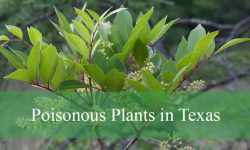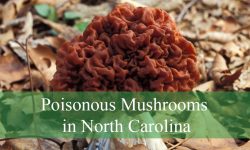A lush and colorful garden isn’t limited to sunny spaces—many flowers that grow in shade can thrive just as beautifully in lower light conditions. Whether you have a woodland garden, a shaded backyard, or a north-facing border, there are plenty of stunning flowers that bring charm and vibrancy to these areas. From delicate spring bloomers to bold, tropical-looking plants, shade-loving flowers offer a diverse range of colors, textures, and forms.
Choosing the right flowers that grow in shade means considering factors like soil moisture, light levels, and plant size. Some plants, like impatiens and begonias, thrive in deep shade, while others, like foxgloves and columbines, prefer dappled light. Many of these flowers not only tolerate low light but also contribute to a dynamic garden with their unique foliage and extended blooming seasons.
In this guide, we’ll explore 40 stunning flowers that grow in shade, each with its own charm and growing requirements. Whether you’re looking for ground cover, perennial blooms, or vibrant seasonal color, you’ll find plenty of inspiration to transform your shaded spaces into a flourishing, eye-catching retreat.
Different Types of Flowers That Grow in Shade
Primrose
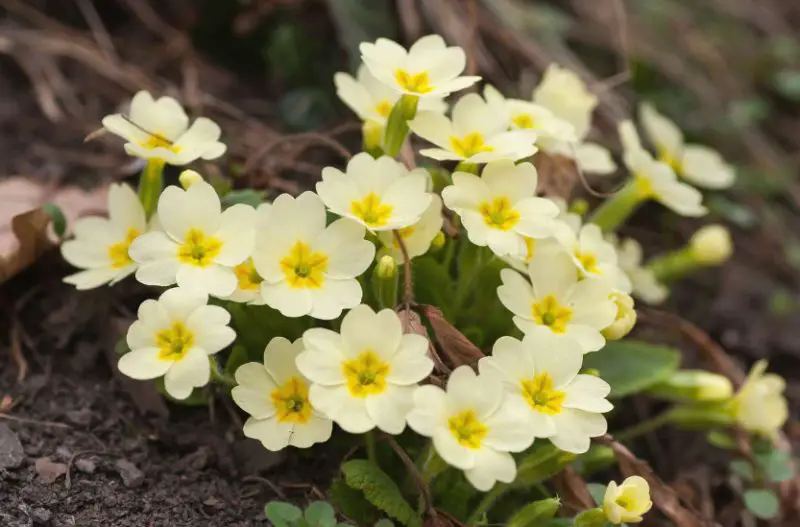
These early bloomers are a delight in the shade, offering a range of colors from soft yellows to vibrant pinks and purples. Primrose (Primula vulgaris) is one of the first flowers to appear in spring, providing a burst of color when much of the garden is still waking up. They prefer humus-rich, damp soil, making them excellent for woodland gardens or beside streams.
Primroses are easy to grow and can naturalize over time, forming colorful clusters that return year after year. Their delicate flowers contrast beautifully with their deep green foliage, making them a favorite for shaded borders and container arrangements.
Ferns
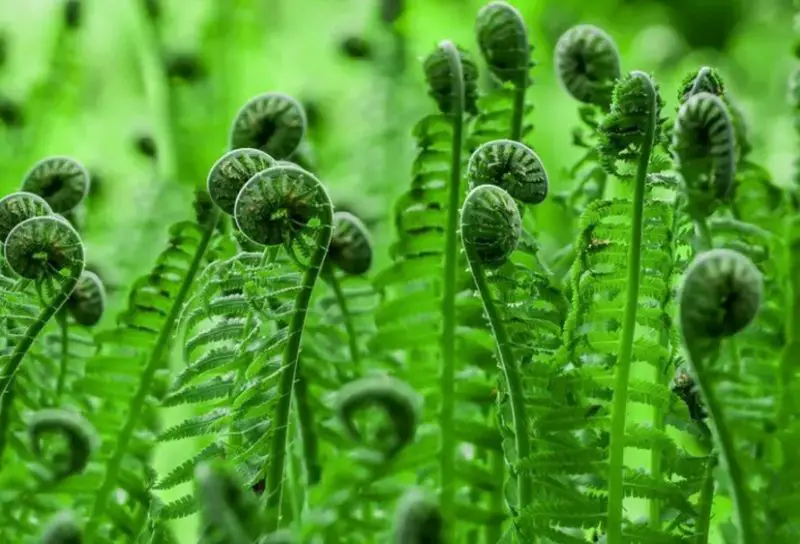
While not flowering in the traditional sense, ferns (Various species) add a lush, prehistoric touch to shaded areas. Their intricate fronds come in various textures and colors, from the bright green of the lady fern to the darker tones of the holly fern. Ferns are excellent for ground cover or as a backdrop for other shade-loving plants, requiring moist, rich soil.
These plants thrive in high-humidity environments, making them ideal for woodland gardens or alongside streams and ponds. Many ferns are also deer-resistant, making them a low-maintenance option for adding depth and texture to the landscape.
Begonia
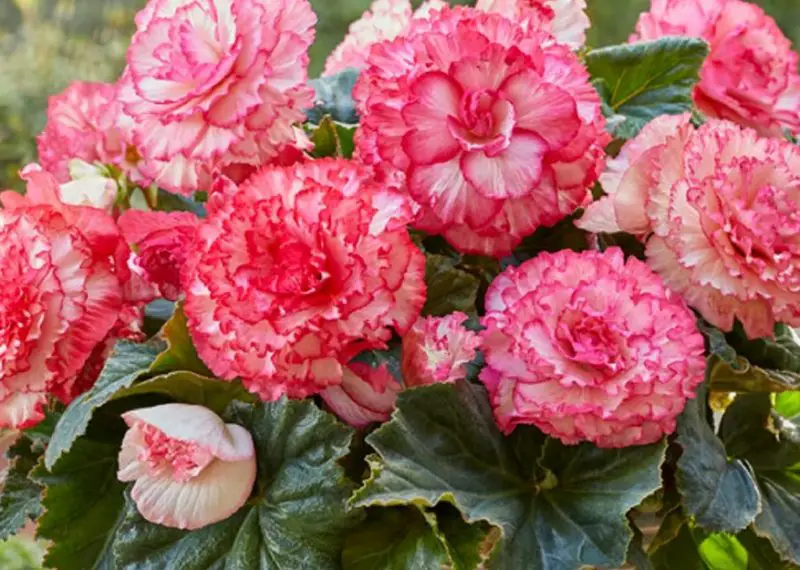
Specifically, the tuberous and rhizomatous varieties of Begonia (Begonia spp.) are perfect for shade. They offer an array of flower colors and unique foliage, with some varieties having leaves as striking as the blooms. Begonias can be annual or perennial, flourishing in the shade with their showy flowers and decorative leaves.
These plants are excellent for container gardening, hanging baskets, or shaded garden beds. They prefer well-drained soil and regular watering to maintain their vibrant blooms, making them a stunning addition to any shaded space.
Hydrangea
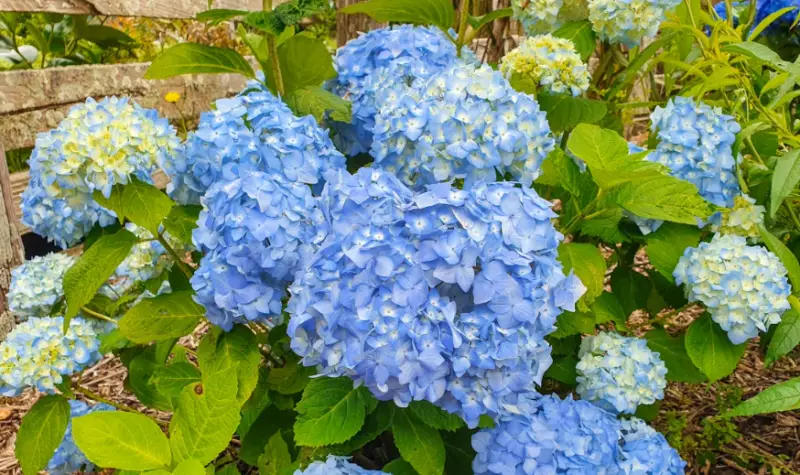
Known for their large, round flower heads, Hydrangea (Hydrangea spp.) can change color based on soil pH. In shaded conditions, they can produce more vibrant blooms, especially in varieties like Hydrangea macrophylla. They need moist, well-drained soil and can brighten up any shaded area with their floral display.
These shrubs are versatile, thriving in both full shade and dappled sunlight. Their flowers can last for months, making them a favorite for cutting gardens and dried arrangements. With proper pruning, hydrangeas can provide continuous beauty year after year.
Coral Bells
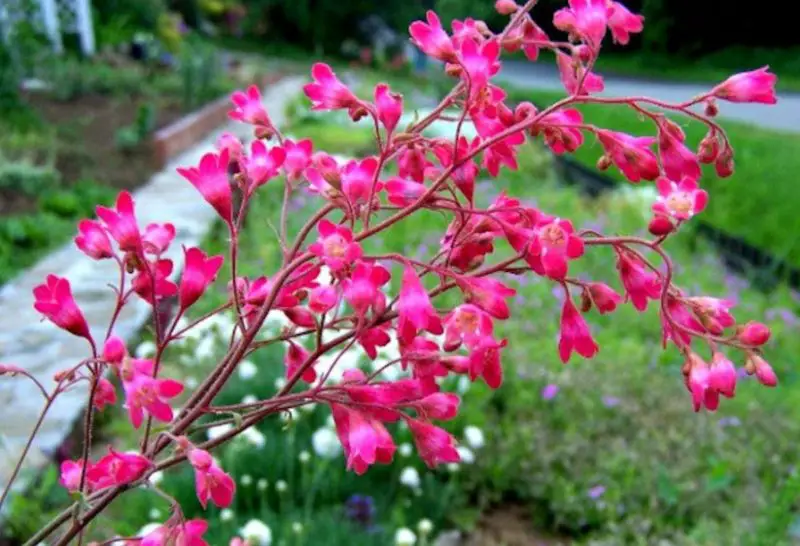
Heuchera (Heuchera spp.), commonly known as coral bells, are prized for their foliage, which comes in a spectrum of colors from purple to lime green, often with intricate veining. While the flowers are less prominent, they do add a dainty charm, appearing in summer on thin, airy stems. These perennials are versatile, fitting well in shaded rock gardens or borders.
In addition to their stunning foliage, heucheras are drought-tolerant and easy to maintain. They pair beautifully with hostas and ferns, adding year-round interest to shaded landscapes with their unique leaf colors and textures.
Columbine
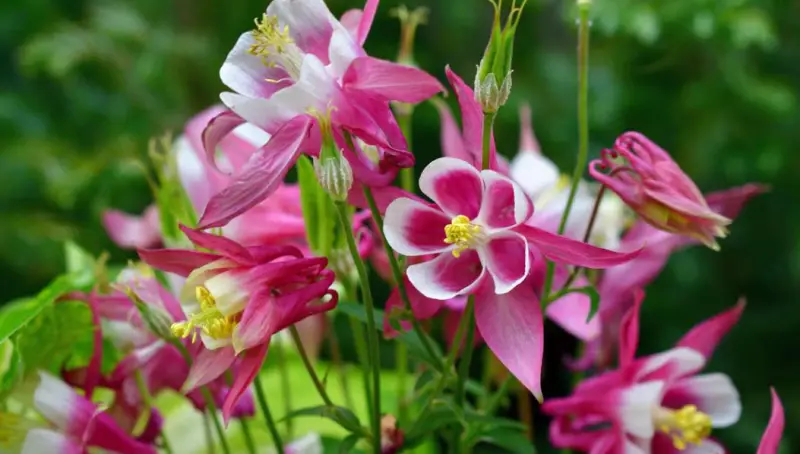
With their distinctive spurred flowers, Columbine (Aquilegia spp.) adds an element of surprise to the shade garden. Blooming in spring, they come in various colors and are excellent for attracting hummingbirds. They’re relatively easy to grow, self-seeding in favorable conditions, and they prefer soil that’s not too dry.
Columbines thrive in dappled shade and mix well with other woodland perennials. Their delicate, nodding flowers bring a graceful charm to borders, rock gardens, and naturalized areas. Once established, they require little maintenance and return year after year.
Sweet Woodruff
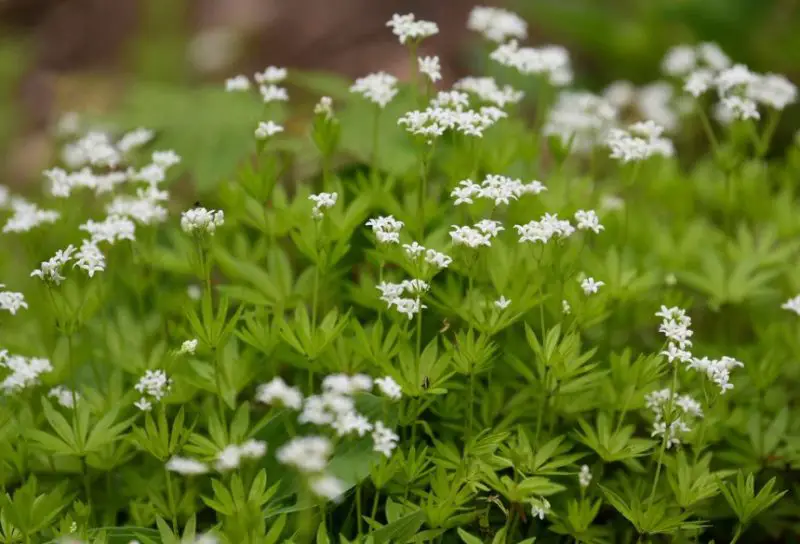
This low-growing perennial is ideal for ground cover in shaded areas. Sweet Woodruff (Galium odoratum) produces tiny white flowers in spring, which have a sweet scent, especially when dried. It loves moist, shady spots, making it perfect under trees where it can spread to form a fragrant carpet.
In addition to its beauty, sweet woodruff has been used in traditional herbal remedies and potpourris. Its foliage remains attractive throughout the growing season, and it pairs well with ferns, hostas, and other shade-loving plants.
Lamium
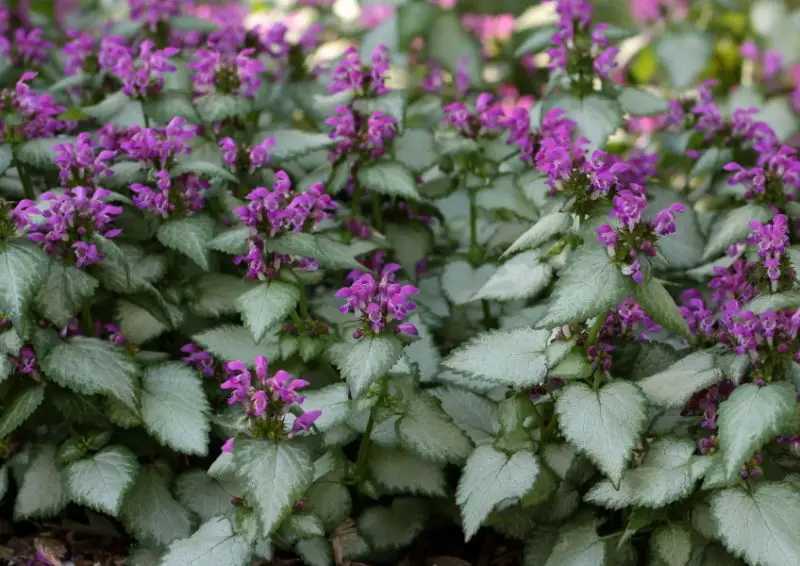
Also known as dead nettle, Lamium (Lamium maculatum) is a ground cover plant valued for its variegated leaves and small, cheerful flowers that bloom in spring. It thrives in shaded spots, providing a splash of color with its pink, purple, or white blossoms. It’s also deer-resistant, making it a practical choice for many gardens.
Lamium is a fast-growing, low-maintenance plant that spreads easily without becoming invasive. Its silver-marbled foliage adds brightness to dark garden corners, and it works well in borders, containers, or as underplanting for taller perennials.
Lungwort
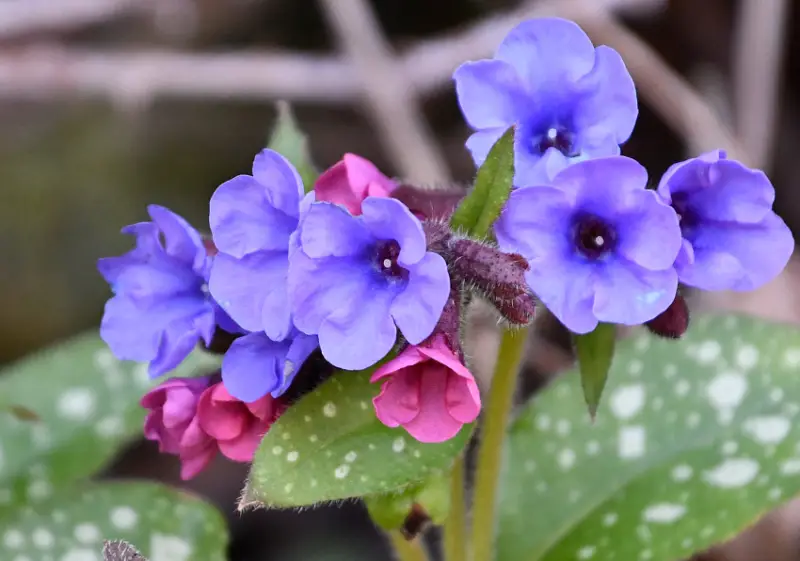
Lungwort (Pulmonaria spp.) gets its name from the spotted leaves that resemble lungs, which in traditional herbalism were thought to indicate its use for lung ailments. This perennial blooms early in spring with flowers that change from pink to blue as they age. It’s perfect for shaded, moist areas where it can spread to form a lush carpet.
Besides its unique flowers and foliage, lungwort is highly resistant to deer and rabbits. Its ability to thrive in damp, shaded environments makes it an excellent companion for ferns, hostas, and bleeding hearts in woodland gardens.
Solomon’s Seal
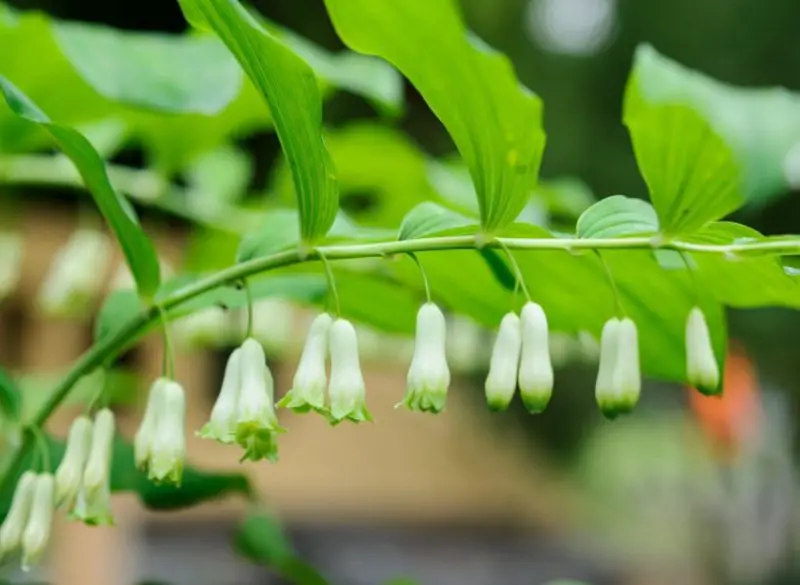
With its arching stems and hanging, bell-shaped flowers, Solomon’s Seal (Polygonatum spp.) adds an elegant touch to shade gardens. The flowers are typically white or greenish-white, appearing in late spring. The plant also features attractive foliage, and in autumn, it bears small blue-black berries. It prefers well-drained, woodland-like soil.
This perennial is known for its graceful, architectural form, making it a favorite for naturalized and woodland garden settings. Over time, it forms dense clumps, creating a stunning visual effect when planted in drifts. Its golden-yellow fall foliage adds seasonal interest.
Toad Lily
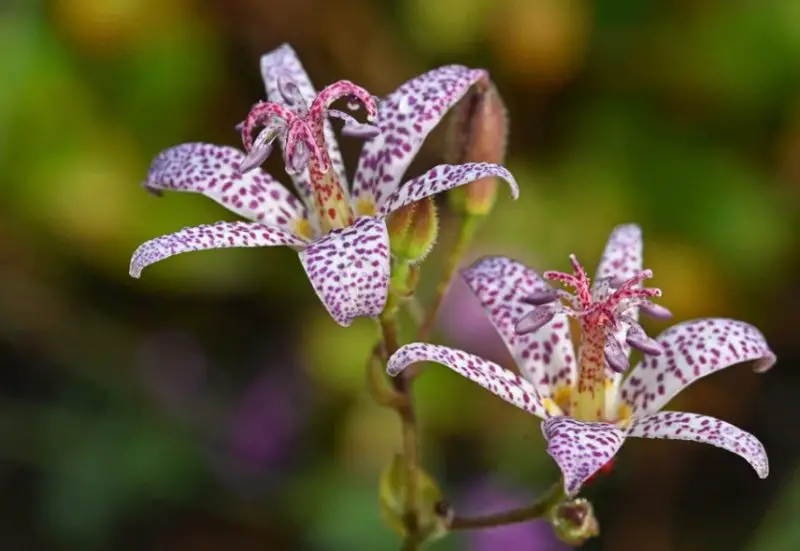
Often called the “orchid of the shade,” Toad Lily (Tricyrtis spp.) has exotic, orchid-like flowers with speckled patterns. Blooming in late summer or fall, they’re a unique addition to a shady garden, offering beauty when many other plants have finished flowering. They like humus-rich soil and can be found in various shades of purple, pink, and white.
These perennials thrive in moist, well-drained soil and add an unexpected elegance to woodland gardens. Their arching stems and intricate flowers make them a great choice for late-season interest in shaded borders or along pathways.
Foamflower
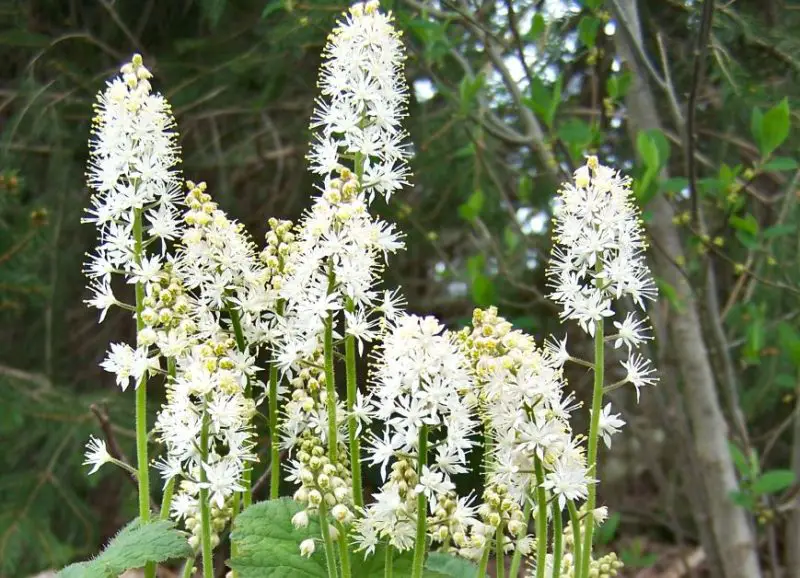
This plant gets its name from the frothy, foam-like appearance of its flower spikes. Foamflower (Tiarella cordifolia) is a North American native, offering heart-shaped leaves and delicate white or pink flowers in spring. They’re excellent for woodland gardens, doing well in partial to full shade and moist conditions.
In addition to their charming blooms, foamflowers have attractive foliage that often turns red or bronze in fall. They spread gradually, making them a great option for ground cover in shaded areas, pairing well with ferns and hostas.
Bergenia
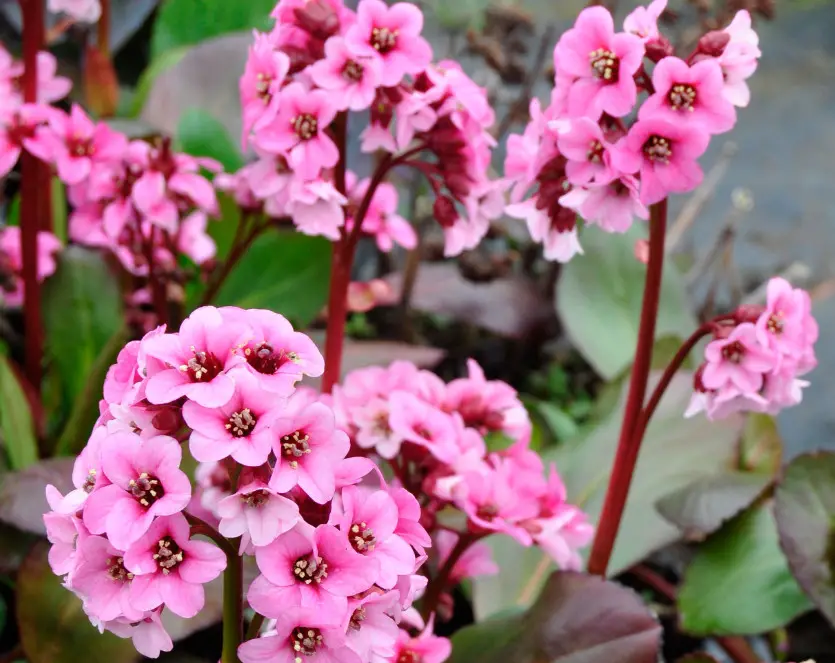
Often called elephant’s ears due to their large, leathery leaves, Bergenia (Bergenia spp.) is a hardy perennial that blooms in early spring with clusters of pink or white flowers. They’re adaptable to various light conditions but truly excel in shade, where their foliage can take on a reddish hue in colder months.
Bergenias are low-maintenance and drought-tolerant once established, making them an excellent choice for borders and ground cover. Their evergreen leaves provide year-round interest, adding texture and color even in winter.
Jacob’s Ladder
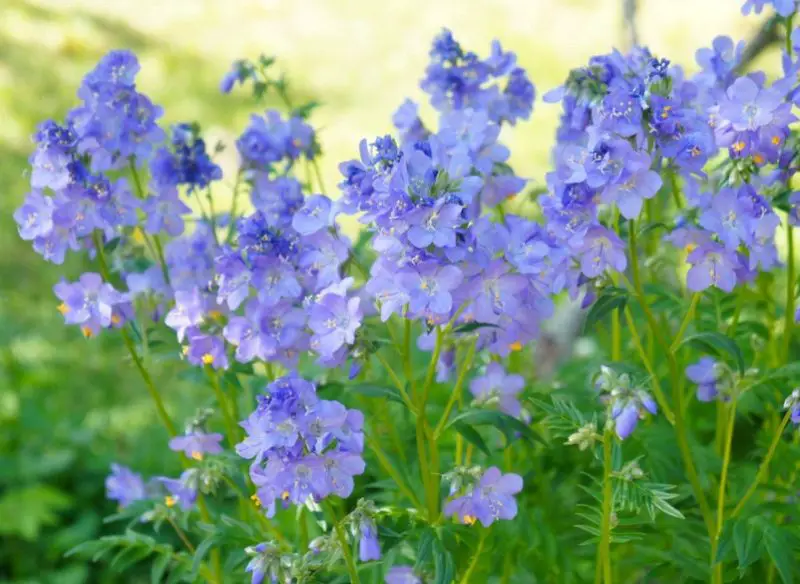
Known for its ladder-like arrangement of leaves, Jacob’s Ladder (Polemonium caeruleum) produces lovely blue or violet flowers in spring. It’s suited for partial shade to shade, preferring soil that remains moist. This plant is not only attractive but also deer-resistant, making it a good choice for naturalistic garden settings.
With its delicate, fern-like foliage, Jacob’s Ladder brings a soft, airy feel to shaded garden beds. It pairs well with other shade-loving plants like astilbes and bleeding hearts, adding depth and movement to the landscape.
Lily of the Valley
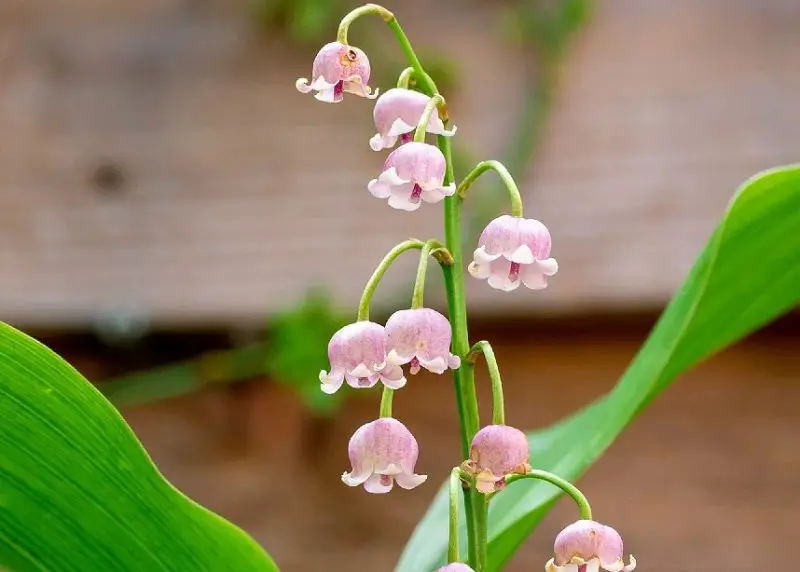
With its sweet fragrance and delicate bell-shaped flowers, Lily of the Valley (Convallaria majalis) is a classic choice for shaded gardens. It spreads through rhizomes, creating a carpet of green leaves and tiny white flowers. While beautiful, it’s important to note that all parts of the plant are toxic if ingested.
This hardy perennial thrives in cool, moist soil and is ideal for ground cover in shady areas. Once established, it requires little maintenance and provides a nostalgic charm to cottage and woodland gardens.
Wood Anemone
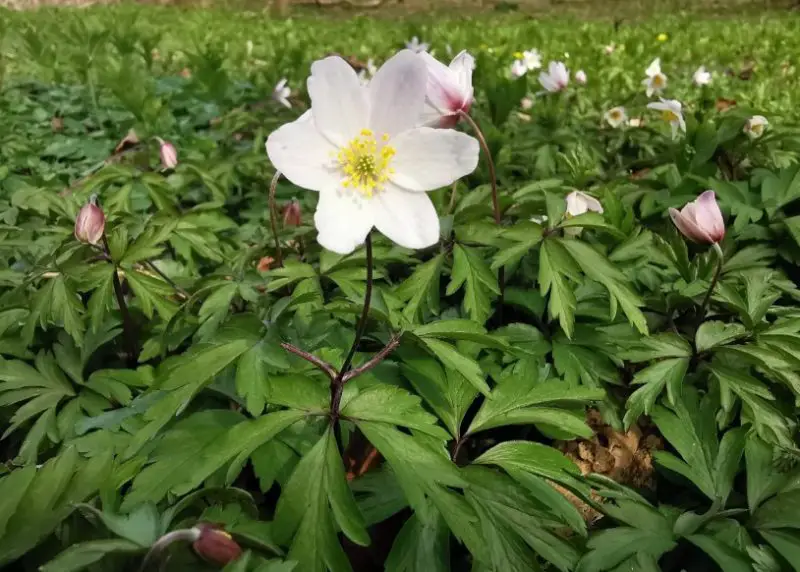
These charming woodland plants produce star-shaped flowers in white, pink, or blue in early spring. Wood Anemone (Anemone nemorosa) is subtle but spreads to form a lovely ground cover under trees or in shaded borders. They thrive in humus-rich, well-drained soil.
As a low-maintenance perennial, wood anemones add a naturalistic charm to woodland gardens. Their delicate flowers close at night and on cloudy days, adding an enchanting touch to shaded areas. Once established, they require little care and return reliably each year.
Corydalis
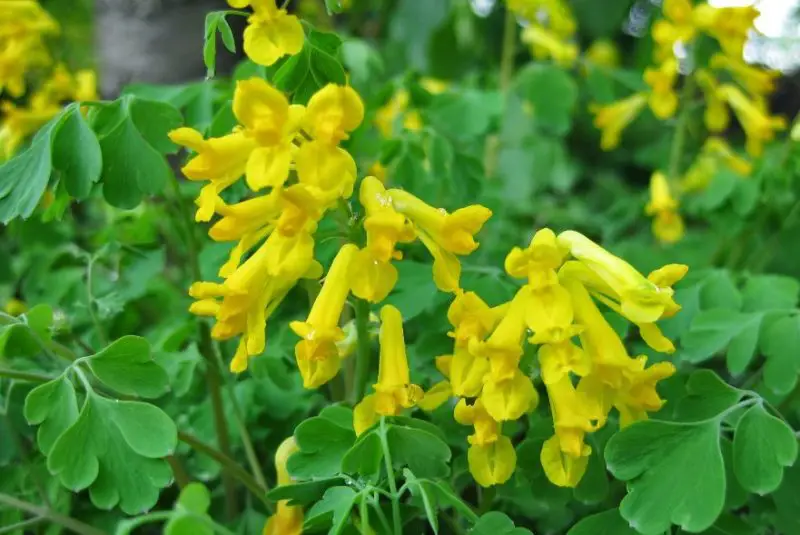
With fern-like foliage and tubular flowers, Corydalis (Corydalis spp.) adds a touch of whimsy to shade gardens. The flowers can be blue, pink, yellow, or purple, blooming from spring into summer. They prefer well-drained, slightly alkaline soil and are excellent for rockeries or as an underplanting for larger shrubs.
Corydalis plants are known for their long-lasting blooms and their ability to thrive in cooler conditions. They spread gently, forming attractive clusters that complement ferns and hostas. Their delicate, airy growth habit brings lightness to shaded beds and borders.
Epimedium
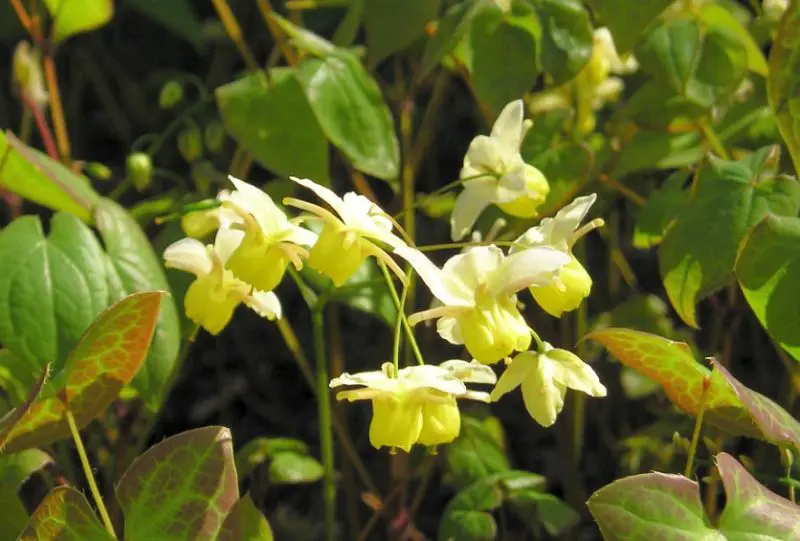
Commonly known as barrenwort or bishop’s hat, Epimedium (Epimedium spp.) has heart-shaped or arrow-shaped leaves and produces small, intricate flowers in spring. Colors range from yellow to red, often with contrasting spurs. This plant is perfect for dry shade, where it will spread to form an attractive ground cover.
Epimedium’s foliage remains beautiful throughout the seasons, often turning bronze or red in fall. It is highly resistant to drought and deer, making it an excellent choice for difficult shaded areas where other plants might struggle to thrive.
Japanese Painted Fern
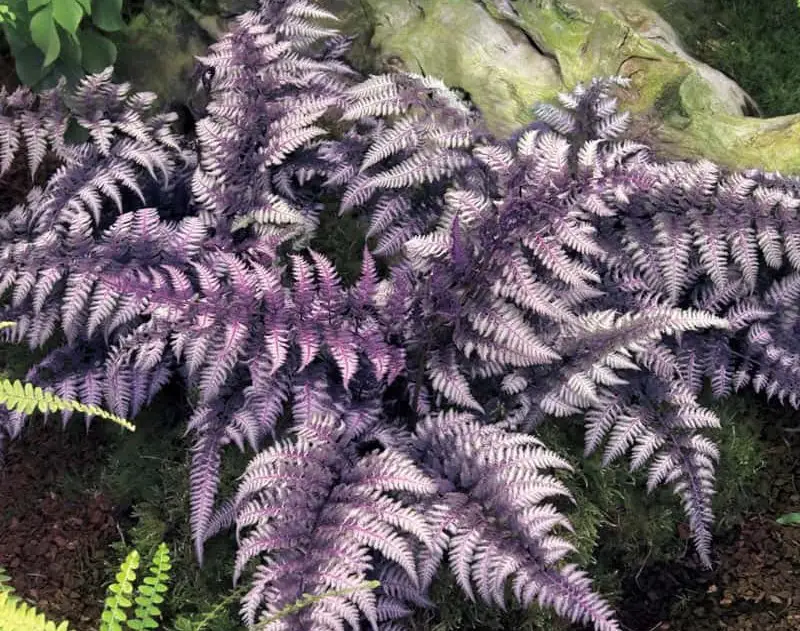
While not a flowering plant, Japanese Painted Fern (Athyrium niponicum) is included for its striking foliage, which can be silver, burgundy, and green. It’s one of the most decorative ferns for shade, adding texture and color where flowers might not grow. It prefers moist, well-drained soil and can brighten up even the darkest corners of the garden.
This low-maintenance fern pairs beautifully with hostas and astilbes, creating a soft, layered look in shade gardens. Its unique coloration makes it a standout feature, adding elegance and contrast to shaded landscapes.
Cyclamen
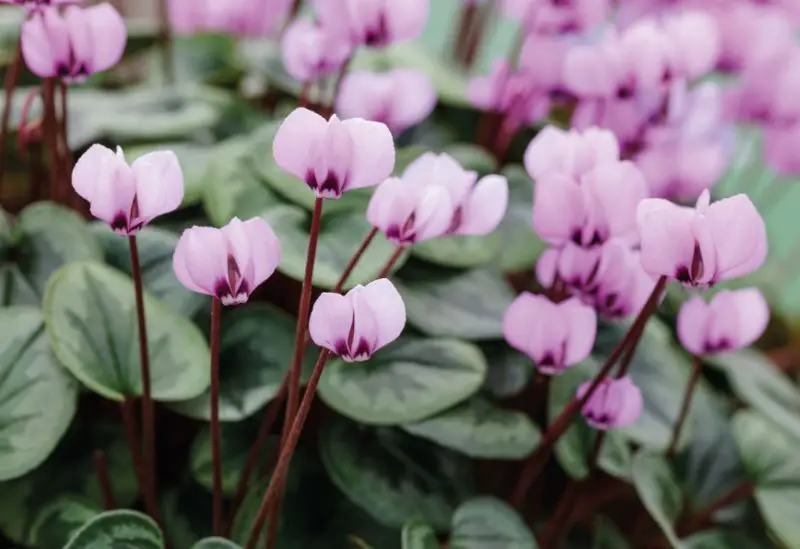
These charming plants are known for their unique, nodding flowers and marbled, heart-shaped leaves. Cyclamen (Cyclamen spp.) bloom in late winter to early spring, with colors ranging from white to deep pink. They grow well in well-drained soil and are excellent for rock gardens or under trees where the soil doesn’t get too wet.
Cyclamen’s delicate appearance belies its toughness, as it thrives in dry shade and returns year after year. Its attractive foliage remains through much of the growing season, adding interest even after the flowers have faded.
Hellebore
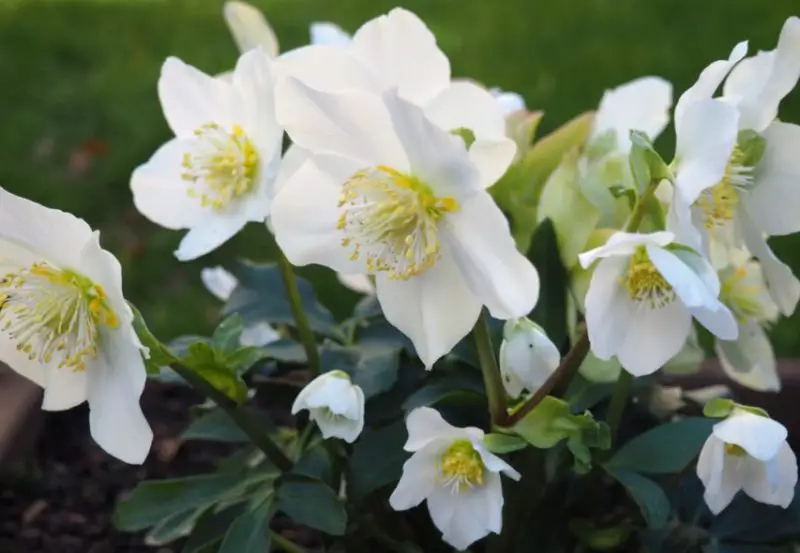
Also known as Lenten roses, Hellebore (Helleborus spp.) is one of the earliest bloomers, sometimes pushing through the last snowfall of winter. Their flowers come in shades of white, green, pink, purple, and even near-black. Thriving in nutrient-rich, well-drained soil, they are ideal for shaded gardens where they gradually form attractive clumps over time.
Beyond their striking flowers, hellebores are valued for their evergreen foliage, which provides year-round interest. Resistant to deer and drought, they require minimal upkeep and are a reliable source of early-season color.
Viola
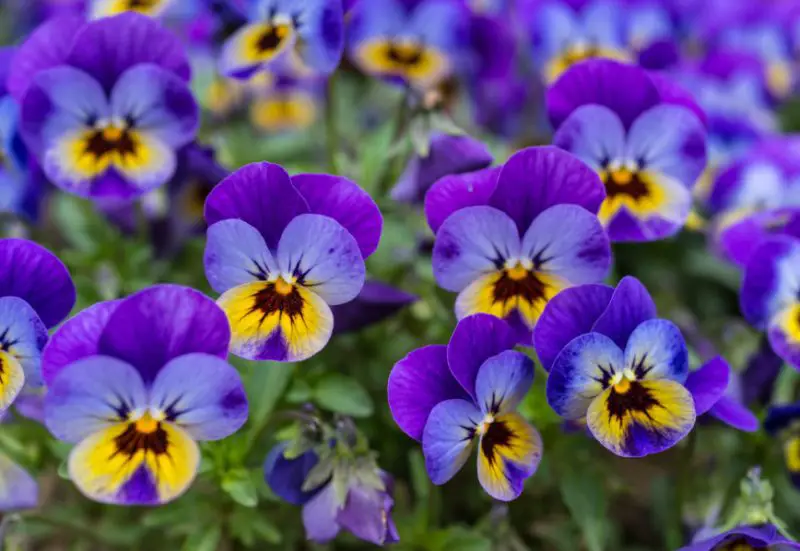
Violas (Viola spp.), including wild violets and garden pansies, bring bright color to shade gardens with their delicate blooms. These hardy perennials start flowering in early spring and display a diverse palette, from deep purples and blues to soft yellows and bicolored varieties. They prefer moist, fertile soil but adapt well to various growing conditions.
Violas self-seed readily, ensuring a continuous presence in the garden. Their compact size makes them perfect for edging pathways, planting in containers, or filling in spaces between larger perennials.
Brunnera
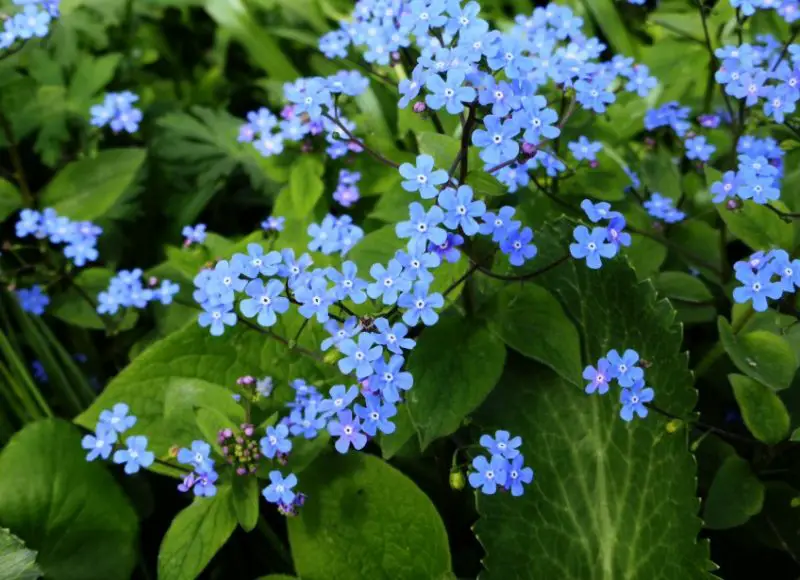
Brunnera (Brunnera macrophylla), often called Siberian bugloss, is a favorite for its striking foliage and delicate spring flowers. The plant’s broad, heart-shaped leaves often feature a silvery sheen, providing visual contrast in shaded areas. In early spring, clusters of tiny, sky-blue flowers emerge, resembling forget-me-nots.
With its preference for cool, damp soil, Brunnera thrives in woodland gardens or along shaded borders. It pairs beautifully with ferns, hostas, and other shade-loving plants, creating a layered, textured display.
Bleeding Heart Vine
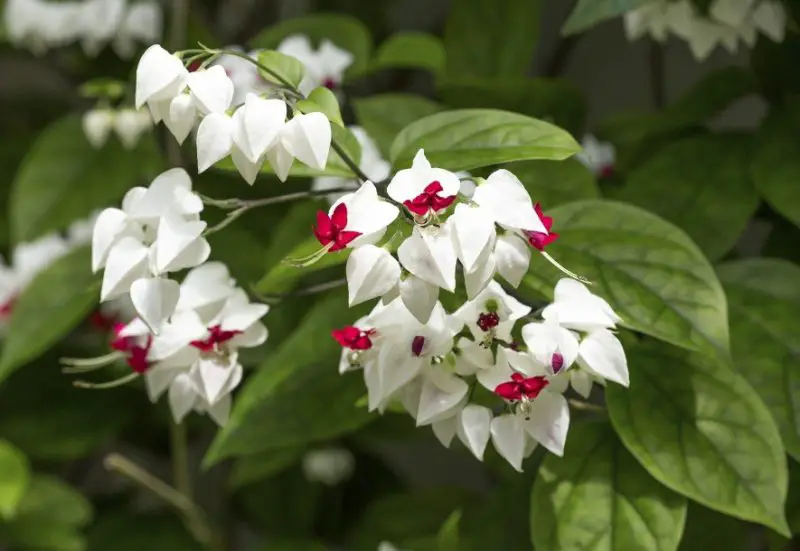
A tropical beauty, Bleeding Heart Vine (Clerodendrum thomsoniae) is known for its striking two-toned flowers. The blossoms feature white, petal-like sepals surrounding a deep red center, creating a stunning contrast. This vine flourishes in partial shade and requires regular moisture to support its vigorous growth.
In warm climates, it climbs trellises and arbors effortlessly, adding vertical interest to shaded spaces. In cooler regions, it can be grown as an annual or kept indoors during the winter months, making it a versatile option for garden enthusiasts.
Wood Fern
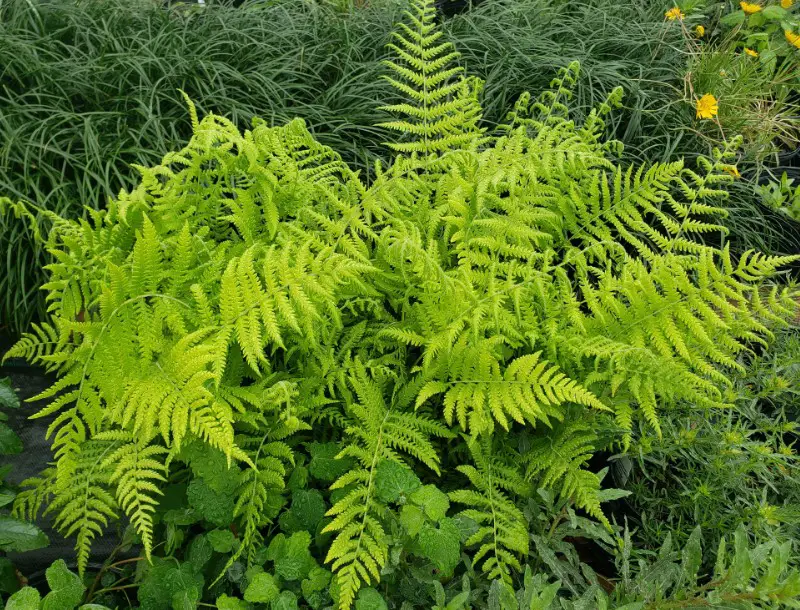
Wood Fern (Dryopteris spp.) is a hardy and adaptable fern that brings lush greenery to shaded gardens. Its feathery fronds arch gracefully, adding movement and texture to garden beds. Thriving in rich, moist soil, it forms dense clumps that serve as an excellent backdrop for flowering perennials.
With its resilience and ability to flourish in deep shade, wood ferns are a low-maintenance solution for areas where other plants struggle. Their timeless elegance makes them a must-have for naturalistic and woodland garden designs.
Japanese Anemone
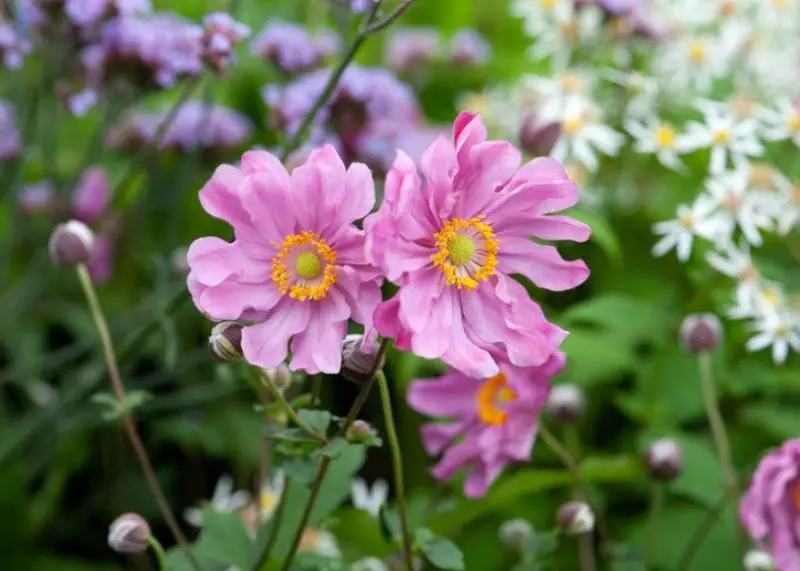
Japanese Anemone (Anemone x hybrida) brings elegance to the late-season garden with its delicate pink or white blooms. Flowering from late summer into fall, these perennials thrive in partial shade, particularly in moist, well-draining soil. Their tall, graceful stems sway in the breeze, adding movement and charm to shaded borders.
Though they start slow, Japanese anemones spread over time, making them a great option for filling larger garden spaces. They’re deer-resistant and low-maintenance, offering long-lasting beauty with minimal effort.
Sweet Violet
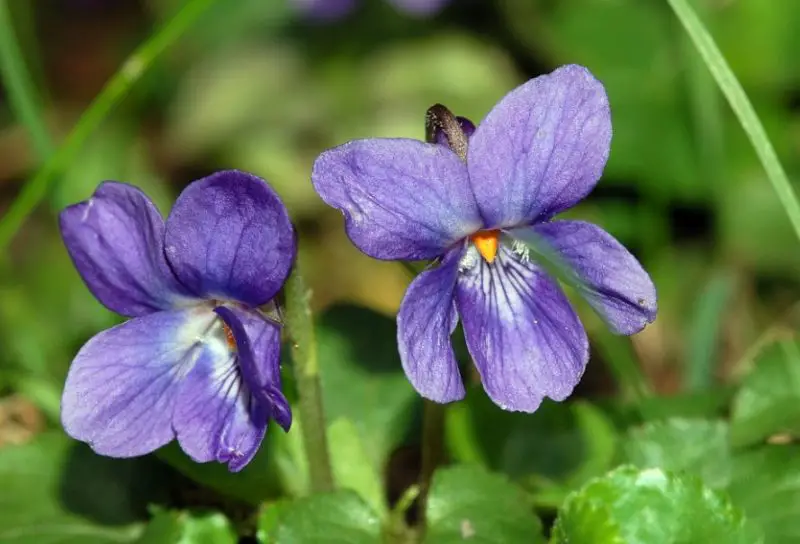
Sweet Violet (Viola odorata) stands out for its enchanting fragrance, which is stronger than that of common violets. These small perennials bloom in early spring, displaying deep purple, blue, white, or yellow flowers nestled among heart-shaped leaves. They thrive in shaded areas with moist, fertile soil, making them perfect for woodland gardens.
Spreading through underground rhizomes, sweet violets create a natural ground cover, suppressing weeds while providing seasonal interest. Their flowers are even edible and have been traditionally used in teas and desserts.
Fringed Bleeding Heart
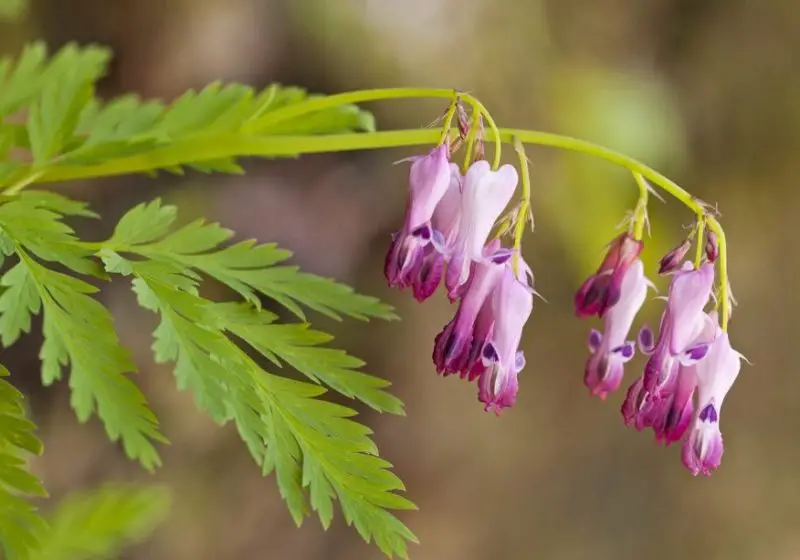
Fringed Bleeding Heart (Dicentra eximia) is a delicate, fern-like perennial that produces pink, heart-shaped flowers from spring to fall. Unlike its more well-known cousin, this variety is more drought-tolerant and continues blooming throughout the warmer months. It prefers partial to full shade and thrives in well-drained, slightly acidic soil.
Its finely cut foliage remains attractive even when not in bloom, adding texture to shaded garden beds. This plant is also highly resistant to deer and rabbits, making it a reliable choice for woodland settings.
Tiarella
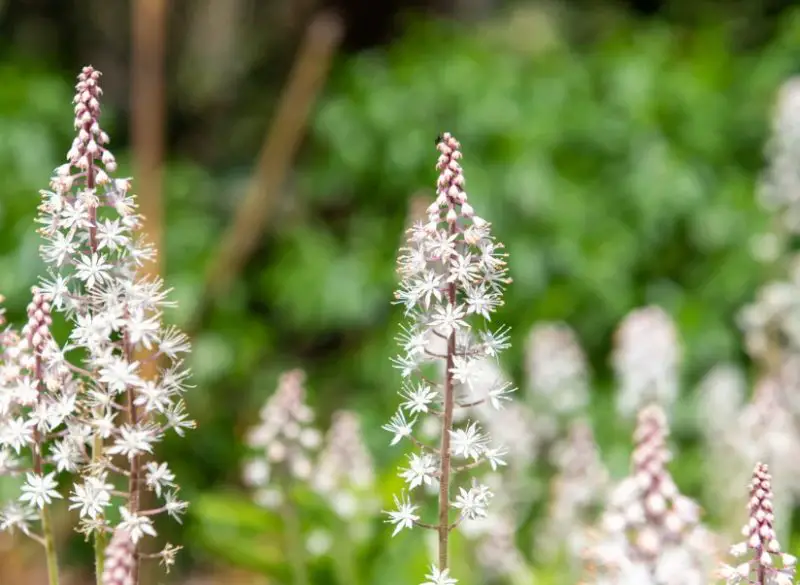
Tiarella (Tiarella spp.), commonly known as foamflower, is a charming shade perennial known for its frothy spikes of white or pale pink flowers. Blooming in spring, these plants also feature striking foliage, often with deep veins or mottled patterns that remain attractive throughout the year. They thrive in moist, humus-rich soil, making them well-suited for woodland gardens.
Tiarella spreads slowly by runners, forming a dense ground cover that helps suppress weeds. Their delicate flowers attract pollinators, adding life and movement to shaded garden spaces.
Mazus
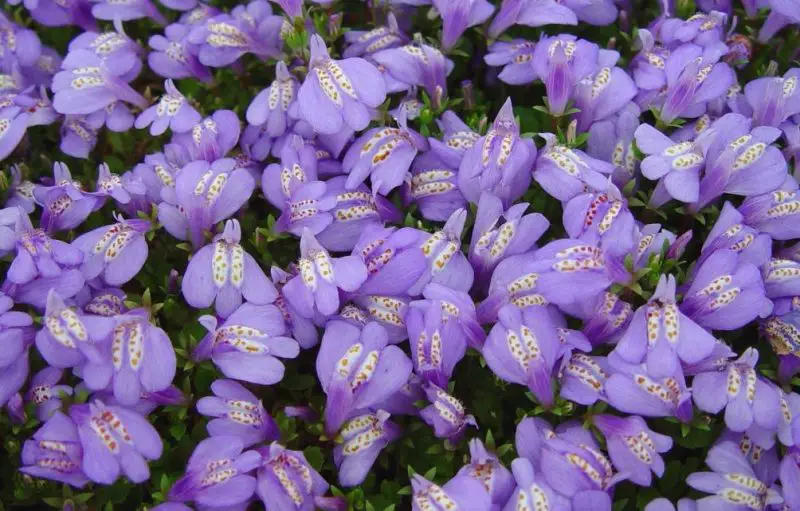
Mazus (Mazus reptans) is a vigorous, low-growing perennial that creates a dense carpet of greenery in shaded areas. In late spring and early summer, it produces charming blue or white flowers that resemble tiny snapdragons. This adaptable plant is excellent for filling gaps between stepping stones, along garden paths, or in rock gardens.
Thriving in moist, well-drained soil, Mazus remains evergreen in mild climates, providing year-round interest. It’s an easy-care ground cover that quickly spreads without becoming invasive.
Woodland Phlox
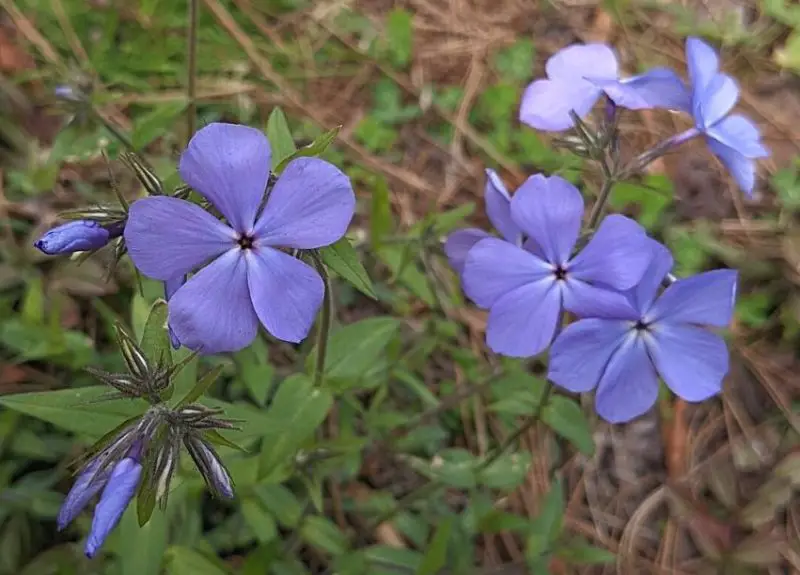
Woodland Phlox (Phlox divaricata) is a native perennial that brightens up shaded gardens with fragrant clusters of lavender-blue flowers in spring. Preferring dappled shade and well-drained, slightly acidic soil, this plant is an excellent addition to woodland landscapes.
Its spreading habit allows it to form a lush mat of foliage, helping to prevent weeds and erosion. The nectar-rich flowers attract butterflies and hummingbirds, making it a valuable plant for supporting pollinators.
Impatiens
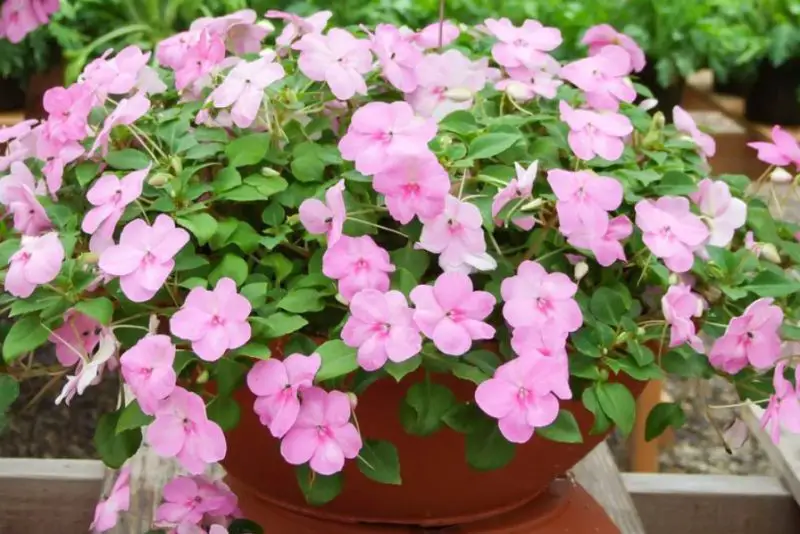
Commonly known as busy Lizzies, Impatiens (Impatiens walleriana) are a go-to for shade gardens. They bloom from spring until the first frost, offering a palette of vibrant colors including reds, pinks, purples, and whites. Their flowers are delicate with a somewhat translucent appearance, making them pop even in low light. Impatiens prefer moist, well-drained soil and are perfect for adding color to dark corners of the garden.
These flowers are also a favorite for container gardening and hanging baskets due to their compact growth habit. Though they thrive in shade, they require regular watering to prevent wilting. With proper care, impatiens provide a long-lasting, cheerful display.
Hosta
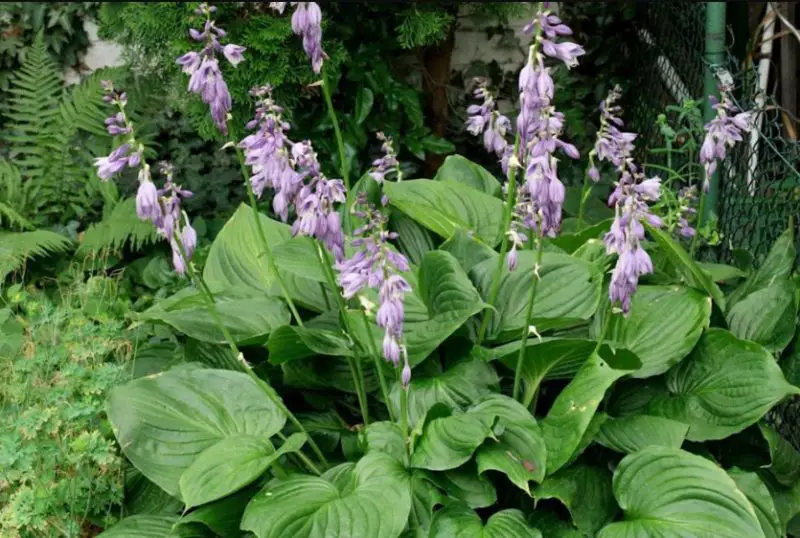
Renowned for their lush, broad leaves, Hosta (Hosta spp.) come in various shades of green, blue-green, and even variegated patterns. While they’re mostly grown for foliage, hostas do produce elegant, lily-like flowers in shades of white, lavender, or purple during the summer. They are incredibly hardy, often surviving where other plants might struggle, and they thrive in the dappled shade under trees.
Low maintenance and drought-tolerant once established, hostas are ideal for creating a textured, layered look in shaded garden beds. Their foliage can provide year-round interest, especially when combined with ferns or other shade-loving plants.
Bleeding Heart
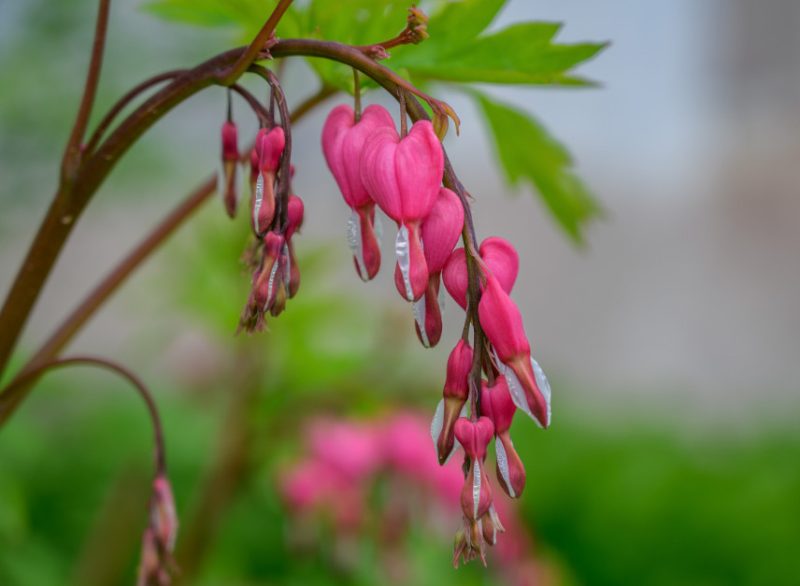
Known for its unique heart-shaped flowers that hang in rows like a string of pearls, Bleeding Heart (Dicentra spectabilis) is both beautiful and a bit whimsical. The plants bloom in late spring, with flowers in pink and white, adding a romantic touch to any shaded garden. They prefer moist, rich soil and can form spreading clumps that return year after year.
After blooming, bleeding hearts may go dormant in summer, so they pair well with plants that emerge later in the season. They are deer-resistant and require minimal upkeep, making them a charming yet practical addition to woodland gardens.
Astilbe
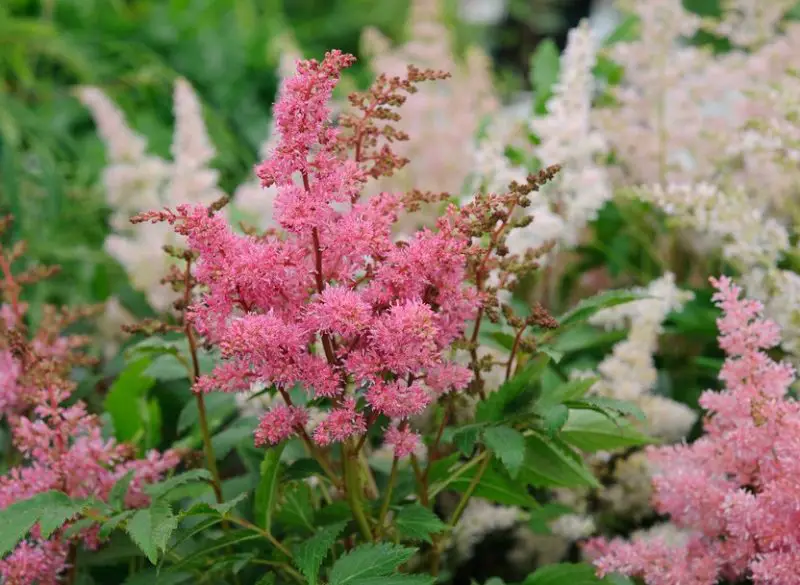
With their feathery plumes of flowers, Astilbe (Astilbe spp.) bring a softness to the shade garden. Available in colors ranging from white and pink to deep red, these perennials are not only visually appealing but also require minimal care once established. They thrive in moist, well-drained soil and can brighten up the darker areas with their vibrant blooms.
Astilbes also have attractive fern-like foliage that remains lush even after flowering. They make excellent companion plants for hostas and ferns, creating a rich, layered effect in shaded garden beds. Their long-lasting flowers are great for fresh or dried arrangements.
Foxglove
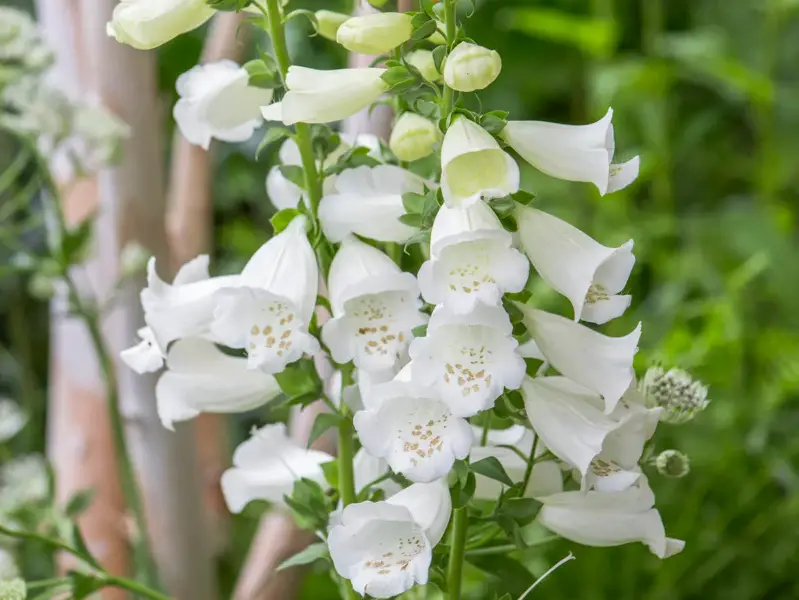
Tall and stately, Foxglove (Digitalis purpurea) produces tubular flowers on spikes that can be found in shades of pink, purple, white, and yellow, attracting pollinators like bees. They’re biennial or short-lived perennials, meaning they’ll often self-seed, ensuring a continuous show in the garden. They do well in partial shade, particularly where the soil is fertile and moist.
Though beautiful, foxgloves are toxic if ingested, so they should be planted with caution around pets and children. Their towering blooms add vertical interest, making them excellent choices for cottage gardens or naturalized settings.

